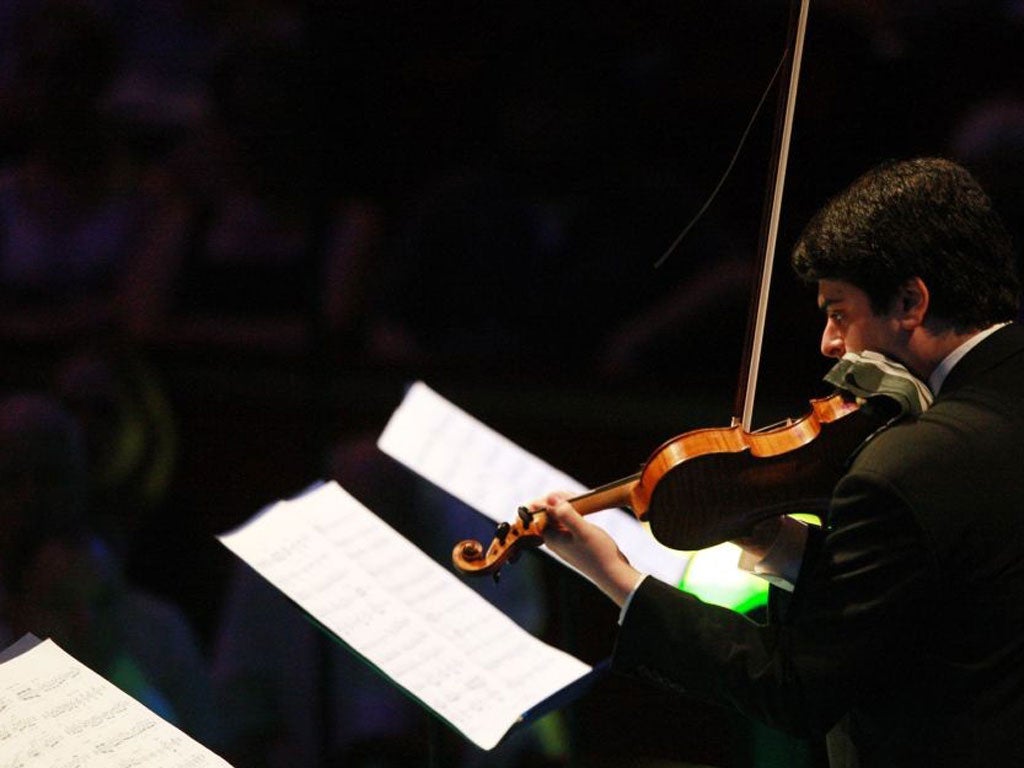Prom 13: Daniel Barenboim/Michael Barenboim/West-Eastern Divan Orchestra, Royal Albert Hall

Your support helps us to tell the story
From reproductive rights to climate change to Big Tech, The Independent is on the ground when the story is developing. Whether it's investigating the financials of Elon Musk's pro-Trump PAC or producing our latest documentary, 'The A Word', which shines a light on the American women fighting for reproductive rights, we know how important it is to parse out the facts from the messaging.
At such a critical moment in US history, we need reporters on the ground. Your donation allows us to keep sending journalists to speak to both sides of the story.
The Independent is trusted by Americans across the entire political spectrum. And unlike many other quality news outlets, we choose not to lock Americans out of our reporting and analysis with paywalls. We believe quality journalism should be available to everyone, paid for by those who can afford it.
Your support makes all the difference.As their intensive Beethoven and Boulez series steams onward, you might expect the players of Daniel Barenboim’s West-Eastern Divan Orchestra to be wilting a little. Not a bit of it. This fourth concert held the work that many consider Beethoven’s finest symphonic gem, the Seventh – and if anyone’s mojo needed a shot in the arm, that was the place to be.
After the opening Eighth Symphony, though, the stage was given for the rest of the first half to just one performer – Michael Barenboim, the violinist son of the conductor – plus live electronics by IRCAM’s Gilbert Nouno, the computer music designer, and Jérémie Henrot, the sound engineer. In their capable hands, Boulez’s Anthèmes 2 proved a modern marvel, holding its own beside Beethoven’s best.
This work from 1997 grows as if organically out of the strophic forms of psalms that Boulez remembered hearing in childhood. The sounds of Barenboim Jnr’s violin are refracted into a bedazzlement of electronic transformations which cascade down from a range of speakers around the perimeter of the ceiling. The electronics are every bit as virtuoso a feat as the violin playing: the second episode’s pizzicato sets up a multifaceted hailstorm, while at other moments the soloist’s cantilena is surrounded by what feels like a phantom string ensemble. Boulez’s intensity of sonic colour seems to pick up and transform a kernel of the sound-colour notions of his teacher, Olivier Messiaen, in almost the same way that the electronics work on the violin’s tone. Mesmerising.
The evening started with Beethoven’s compact Eighth Symphony, dominated by focus, control and what sometimes felt like over-restrained tempi. But its elemental nature shone through – powerful rhythms, the interdependence of the instrumental voices, the heart-of-the-matter paragraphs; after the interval these qualities came to fruition in the Seventh.
Barenboim ran this symphony as a giant single narrative, almost without a break. As he shaped both microcosm and macrocosm – from the detailed phrasing of the second movement’s fugal episode to the overall pace that saved the real letting-rip for last – the orchestra began to move and breathe as one. And we found ourselves in one of those tremendous moments when music does what it does best: unifying performers and audience as everybody simply loses themselves in the shared energy of the experience. At the conclusion Barenboim stood triumphant, milking the ovation – as well he might.
Join our commenting forum
Join thought-provoking conversations, follow other Independent readers and see their replies
Comments